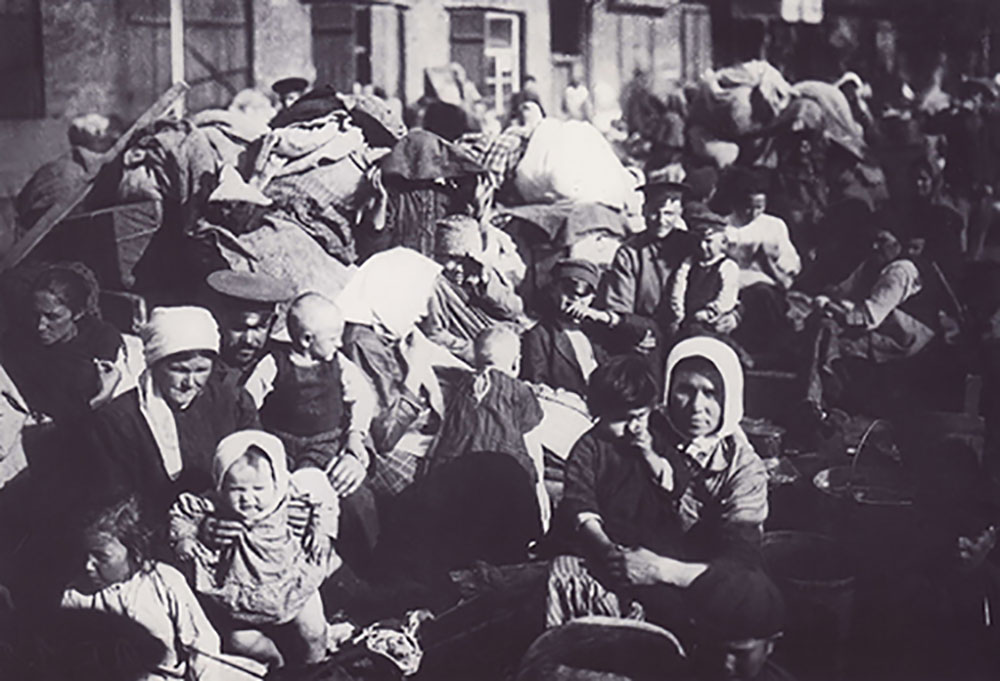 Hunger forced many Russian peasants, including children and old people, to beg from their neighbors. They felt ashamed. But there was no help for it. There was nothing, literally nothing, to eat in their izba. And so they went to other izbas, begging for just a single morsel of bread. Relief worker Jonah Stradling described what he saw.
Hunger forced many Russian peasants, including children and old people, to beg from their neighbors. They felt ashamed. But there was no help for it. There was nothing, literally nothing, to eat in their izba. And so they went to other izbas, begging for just a single morsel of bread. Relief worker Jonah Stradling described what he saw.
On entering the izba the [begging] peasant makes the sign of the cross and stops on the threshold in silence, or mutters in a low voice, “Give in Christ’s name.” Nobody pays any attention to him; all go on with their business… as if nobody was there. Only the housewife approaches the table, picks up a piece of bread three square inches in size, and gives it to her visitor. He makes the sign of the cross and goes. All the pieces given are the same size – three inches square. If two people come together, the housewife puts the question, “Are you collecting together?” If the answer is “Yes,” she gives them a piece six square inches. The [beggar] who tramps the neighborhood owns a horse and some land… only for the moment he has no bread. When in ten months time he carries his crops, he will not merely cease begging, but will himself be the giver of bread to others. If because of the aid he receives from his neighbors now, he weathers the storm and succeeds in finding work, he will with the money he earns at once buy bread, and himself help those who have none…
In 1894, the same year Nicholas became tsar, a Swedish relief workder named Jonah Stadling arrived ina peasant village located just ouside of Moscow. He’d come with a cargo of flour to aid the starving people. But when he inspected the community, he realized mere flour would never be enough. He wrote:
- In izba No. 1 I found one cow, three elderly people, one of whom was lying on top of the stove with typhus by the side of two children in the last stages of small pox.
- In No. 2 was a child with small pox, an old man with typhus and two women whose bodies were all swollen. No cattle – all starved: no fuel, no food.
- In No. 3 a curious sight met my eyes. A pair of feet wrapped in rags protruded from the oven and in a moment a big peasant crept out of the opening, followed by a sickly-looking woman. Bursting into tears, she pointed to what looked like two bundles of rags on top of the oven. It [was] two starving children close to death. No cattle, no food, but just what was given from outside.
- No. 4: Two grown people and two children, both ill.
- No. 5 contained a woman and two sickly and forlorn children.
- No. 6 sheltered three families, one cows, one horse and two sheep all huddled together to protect themselves from the intense cold. It was a strange sight to see the dyadushka, or grandfather, climb out of a child’s crib to which the horse was tied, come up to me on his aged limbs and salute with a deep bow. I told him that friends in foreign lands had sent me with help to their suffering brothers in Russia. In a feeble and trembling voice, he said, “What Good People! May God bless you!”
- I had not the heart to enter No. 7 that day.


One Response
The suffering. It makes you cry out to read.